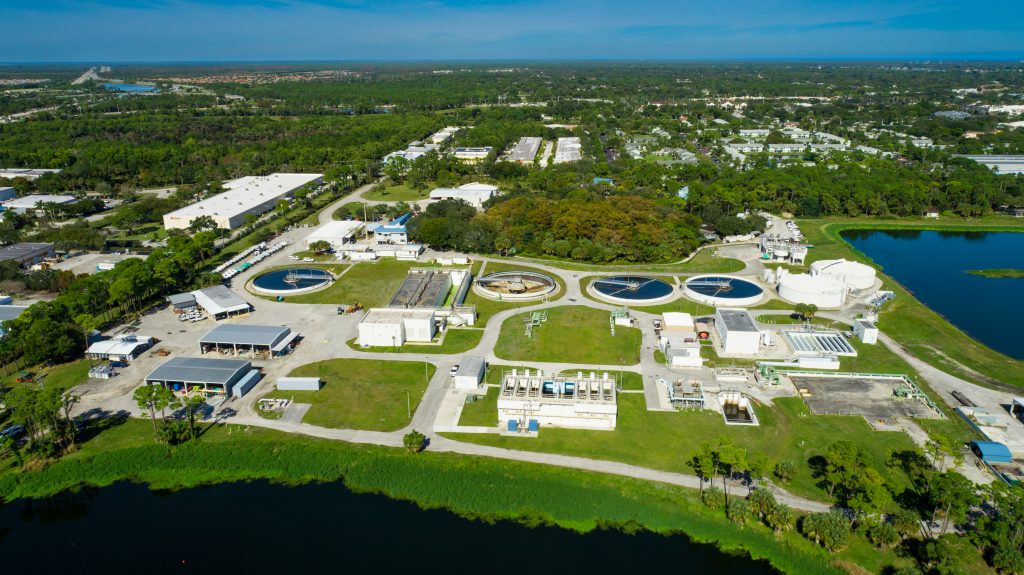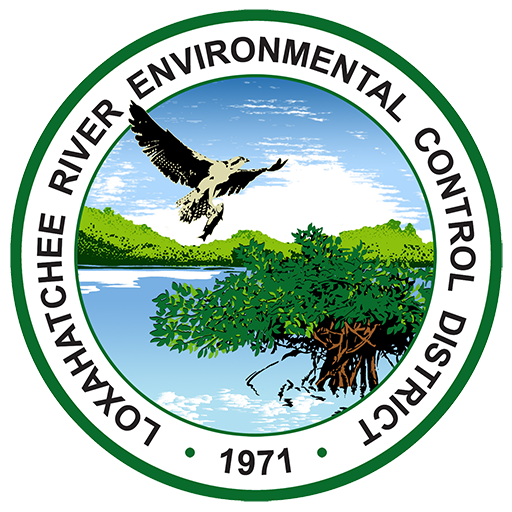
The Loxahatchee River District (District) Pretreatment Program provides for the regulation of wastewater dischargers into the District’s sanitary sewer system. The District administers the program in accordance with their Regulation of Sewer Use, Chapter 31-13 and requirements of the Florida Department of Environmental Protection (FDEP). The purpose of the program is to prevent the introduction of pollutants into the District’s collection system and subsequently to its Wastewater Treatment Facility (WWTF) which could result in treatment interference and detrimental impacts to the biological, solids separation, and/or biosolids dewatering process with the ultimate objective of protecting the public health, environment, and preserving the Loxahatchee River watershed.
National Pretreatment Program
The National Pretreatment Program is a component of the National Pollutant Discharge Elimination System (NPDES) program, which is authorized by United States Environmental Protection Agency (EPA). It is a cooperative effort of the federal, state, and local environmental regulatory agencies established to protect water quality. The National Pretreatment Program is designed to protect Publicly Owned Treatment Works (POTW) infrastructure and reduce conventional and toxic pollutant levels discharged by industries and other nondomestic wastewater sources into municipal sewer systems and into the environment.
In accordance with the National Pretreatment Program and its efforts to reduce conventional and toxic pollutant levels discharged by industries and other nondomestic wastewater sources into municipal sewer systems and into the environment, the District’s Pretreatment Program requires all new connections to the sewer system to be inspected for applicable pretreatment equipment, such as, fat, oil, and grease interceptors (FOG), lint interceptors, and chemical pollutants discharges into the sewer system.
FAQs
Pretreatment is the reduction of the number of pollutants, the elimination of pollutants, or the alteration of the nature of pollutant properties in an industrial waste stream prior to introducing the waste stream into the publicly owned treatment works (POTW)
The District’s pretreatment program was created to ensure that industrial users discharging non-domestic waste streams to the POTW do not cause interference and/or pass-through at the District’s WWTF. The program is intended to protect public health and welfare as well as the environment. The program also promotes and enhances the beneficial reuse and recycling of domestic wastewater and biosolids from the POTW.
In June of 1991, the District was required through its (NPDES) permit modification to establish an Industrial Pretreatment Program. In 1992, the District established its Industrial Pretreatment program to comply with requirements set forth by both the (EPA) and FDEP.
All businesses, including industrial, commercial, and governmental, that discharge anything other than domestic wastewater are subject to the requirements of the Pretreatment Regulations. This simply means they cannot discharge anything that will adversely affect the POTW wastewater system, its workers, or the POTW plant effluent or biosolids.
- Any industry which discharges an average of 25,000 gallons per day or more of a process waste stream to the sewer system (excluding sanitary, contact cooling, and boiler blowdown)
- Any industry whose contributed process waste stream makes up five (5) percent or more of the average dry weather hydraulic or organic capacity of the POTW
- Any industry regardless of size, whose discharge has a potential to adversely affect the operations of the POTW including the collection system or violating any pretreatment requirements.
A business subject to categorical pretreatment standards under Rule 62-625.410, F.A.C., including 40 CFR Chapter I, Subchapter N, parts 405-471. Categorical industrial users have specific limits and requirements that are determined by the Federal government. States and local governments can develop requirements that are more restrictive, but not less restrictive.
Local limits are pollutant limitations which apply to specific constituents that apply to commercial and industrial facilities that discharge to the POTW. These limits are intended to prevent pass- through or interference with treatment efficiency and are established with the intend of protecting the POTW, including the collection system infrastructure, receiving waters, workers’ health and safety, and biosolids disposal practices. The following pollutant limits were established to protect against pass-through and interference. No commercial or industrial users shall discharge non-domestic wastewater containing in excess of the following instantaneous limits:
| Pollutant | Instantaneous Limits |
| Arsenic | 0.24 mg/l |
| Biochemical Oxygen Demand (BOD5) | 400 mg/l |
| Cadmium | 0.18 mg/l |
| Chromium | 2.67 mg/l |
| Copper | 16.3 mg/l |
| Cyanide | 0.64 mg/l |
| Lead | 3.30 mg/l |
| Mercury | 0.41 mg/l |
| Molybdenum | 0.27 mg/l |
| Nickel | 1.94 mg/l |
| Selenium | 0.34 mg/l |
| Silver | 4.44 mg/l |
| Zinc | 1.66 mg/l |
| Total Suspended Solids (TSS) | 400 mg/l |
| Fats, Oils and Grease (FOG) | 100 mg/l |
| pH | <5.5 or >9.5 |
| Temperature | 150° F |
Notes:
- Milligrams per liter (mg/l)
- Biochemical Oxygen Demand (BOD5)
- Limits indicate maximum concentration or value
The District’s Pretreatment Program is designed to reduce the level of pollutants discharged by industries and other non-domestic wastewater sources into the POTW, and thereby reduce the number of pollutants released into the environment through wastewater. The Pretreatment Program is the District’s primary means for assuring that the biosolids meet the EPA’s rigorous quality standards for land application. It also identifies and monitor industrial waste streams which cause potentially plant upsets which in turn could also prevents the District from providing irrigation quality (i.e. reclaimed) to its various reuse customers.
All industrial, commercial, and governmental establishments that discharge anything other than domestic wastewater are subject to the requirements of the pretreatment regulations. For most users, this simply means they cannot discharge anything that will adversely affect the wastewater collection system, its workers, the treatment plant effluent, or plant biosolids.
All potential industrial users are required submit to the District’s Industrial Pretreatment Coordinator a fully executed “Individual User Survey & Permit Application”. Upon review of the Individual User Survey & Permit Application the District may request laboratory analytical results of the establishment waste stream sampled for the pollutant instantaneous limits and submitting of an industrial process waste generation summary and disposal plan.
If a discharge does not meet the District’s local limits requirements or pretreatment requirements, it will not be permitted to discharge the industrial waste stream into the District’s collection system. All non-domestic waste streams will have to be collected and properly disposed of offsite until the facility can provide official supporting lab data that the waste stream was sampled and no pollutant exceeds the local limits listed in the Regulation of Sewer Use, Chapter 31-13. The facility may choose, at their sole cost, to install an industrial pretreatment system. The system shall be designed to reduce the pollutants in the waste stream to meet the District’s local limits and, if applicable, categorial pretreatment standards.
